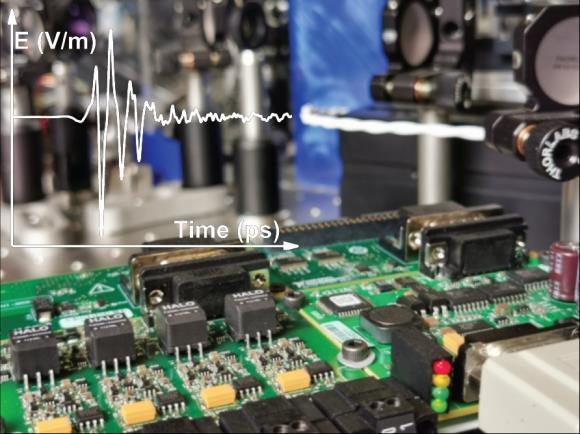2 minute read
Detecting Nanoparticles in Complex Environments
Nanoparticles are everywhere from Medtech products to cosmetics or food and therefore it is important to have tools to monitor them in situ. Current methods to detect and characterize nanoparticles are limited to specific environments (liquids for example) or required extensive and expensive sample preparation. For this reason, we are developing in collaboration with the Adolphe Merkle Institute of the University of Fribourg new thermography-based methods to detect stimuli-responsive nanoparticles in complex environments.
Contributors: M. Bonmarin Partner(s): Adolphe Merkle Institute of the University of Fribourg Funding: Innosuisse, Foundations Duration: since 2012
Nanoparticles are tiny particles which size range from 1 to 100nm (to give an order of comparison the thickness of a sheet of paper is roughly 100’000 nm). Nanoparticles are nowadays used in many products like composite or medical devices but also in cosmetics or food. Regulation is increasing for the use of nanoparticle especially in Europe. Therefore, it is of a particular importance to have accurate tools to detect them. Several methods are available to detect and characterize nanoparticles, but they often demonstrate limitations in term of the medium in which the particles can be investigated or the preparation of the sample and associated costs. Many nanoparticles are stimuli-responsive meaning that they have the ability to produce heat when stimulated (by light or alternating magnetic field). The resulting infrared radiation his can easily be captured by a thermal camera. Using this principle, we developed together with the Adolphe Merkle Institute in Fribourg a new method to characterize nanoparticles in complex environments like cells culture, tissue or composite materials with very high accuracy. We developed several instruments for magnetic nanoparticles like SPIONs or plasmonic particles like gold. The technology has been protected (2 patents) and the startup company NanoLockin GmbH based in Fribourg is commercializing the research results. We are convinced that thermography is a promising method to investigate stimuli-responsive nanoparticles and we are still investigating the potential of the technique for many applications in the field of nanoscience.
Fig. 1: Picture of the Calorsito VIS-NIR device developed by the company NanoLockin GmbH, a spin-off from the Adolphe Merkle Institute and the ZHAW Institute of Computational Physics.
References:
[1] Journal of Physical Chemistry C, 124(2):1575-1584 (2020) [2] Particle & Particle Systems Characterization Journal, 36:1900224 (2019). [3] Journal of Physical Chemistry C, 121(48):27164-27175 (2017). [4] Journal of Magnetism and Magnetic Materials, 427:206-2011 (2017). [5] Nanoscale Journal, 8(27):13321-13332 (2016). [6] www.nanolockin.com

